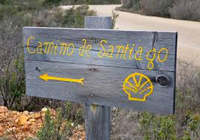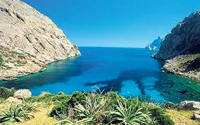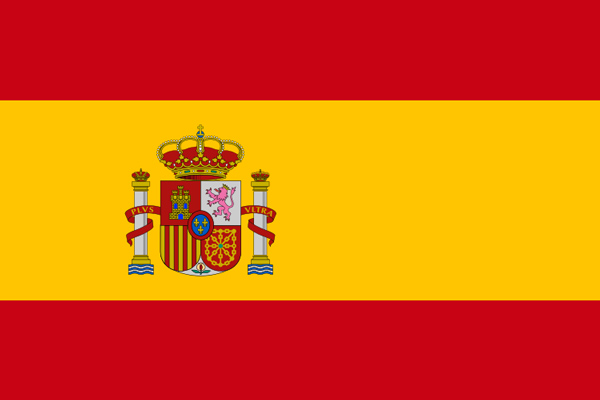Click the points on the map to learn more.

Click here for interesting facts about Spain
 |
Madrid, SpainMadrid is the capital city of Spain. With a population of more than three million people, it is also the largest city on the Iberian Peninsula. Located on a plateau 650 meters above sea level, Madrid is the highest capital city in Europe. Before becoming Spain’s capital in the 17th century, Madrid was occupied by the Moors, and then changed hands many times as different warriors, rulers, and kings took over the area. Eventually recognized as an important central location for Spanish rule, the 18th century in particular brought major renovations to improve the appearance and functionality of the city. Madrid is now known for its many museums and raving nightlife. |
| Back to Map | |
 |
Barcelona, SpainThe largest city in the north-eastern region of Catalonia, Barcelona is often considered the cosmopolitan capital of the region. It stands out as a city of unique art and architecture, as well as a vibrant restaurant and nightlife scene. Most notable in the city is the work of Antoni Gaudí, including La Sagrada Familia, Park Güell, and Casa Batlló. The artist’s ‘gaudy’ style is seen in his modernist designs of buildings, sculptures, tile work, and more. Barcelona is also home to one of the most famous and decorated football (soccer) clubs in Europe, FC Barcelona. |
| Back to Map | |
 |
Córdoba, SpainCordoba, a city in the south of Spain (Andalusia), is known for its extensive history under Moorish rule. Cordoba’s most significant building, the Great Mosque, was built in the 8th century after the Moorish conquest, and later turned into a cathedral in the 13th century. The Historic Centre of Cordoba reflects influence by Roman, Visigoth, Islam, Judaic, and Christian cultural groups who have all resided in the area. |
| Back to Map | |
 |
El Camino de SantiagoTranslated as “The Way of St. James,” El Camino is a network of walking routes primarily through northern Spain, all leading towards the city of Santiago de Compostela. In the Middle Ages, these routes were walked as a pilgrimage for Catholics returning to the tomb of St. James. The most popular route stretches nearly 500 miles. |
| Back to Map | |
 |
Balearic IslandsAn archipelago of islands in the western Mediterranean Sea, Majorca, Minorca, Ibiza, and Formentera make up the four main Balearic islands. Of the 151 islands in the group, only five (the main four, plus Cabrera) are inhabited. The islands are popular tourist destinations and attracted over two million people in 2015. Tennis star Rafael Nadal is a native of the island of Majorca. |
| Back to Map | |
 |
La Alhambra GrenadaLa Alhambra’s name comes from Arabic, meaning red or crimson castle. First built in Granada in the 9th century, La Alhambra was a fort taken over by the Moors in the 13th century, who restored it and constructed new palaces and buildings on the site. Granada was the last city in Spain ruled by the Moors until it was eventually conquered by the Catholic Monarchs in 1492. In 1984, La Alhambra became a UNESCO World Heritage Site.
|
| Back to Map | |
| Population: | 43,484,000 |
| Area: | 195,363 square miles |
| Capital City: | Madrid |
| Largest City: | Madrid |
| Currency: | Euro |
| Official Language: | Castilian Spanish (Catalan, Galician, Basque) |
| GDP (Gross Domestic Product) | $1.3 Trillion |
- Spain is the third-largest country in Europe.
- Spain is made up of 17 autonomous regions, each with their own geography and culture.
- Spain occupies 85% of the Iberian Peninsula. Sapin also administers both the Balearic Islands in the Mediterranean and the Canary Islands in the Atlantic.
- About 11% of Spain’s economy is supported by the tourism industry.
- The Strait of Gibraltar separates Spain (Europe) from Morocco (Africa) - at it’s closest point, the two continents are only 8 miles apart.
- Spain is home of the siesta, a mid-afternoon break when shops and restaurants typically close and residents are known to rest, take care of their families, and enjoy a midday nap.
- After the Vatican City and Jerusalem, the third holiest location for the Catholic Church is the city of Santiago de Compostela in Spain.
- The 1992 Summer Olympic Games were hosted in Barcelona.
- Spain is home to five major mountains spread throughout the country, including the Pyrenees range, which divides Spain and France.
- Don Quixote, considered to be the first modern novel, was written by Spaniard Miguel de Cervantes
|
|
 |
|
| The red and yellow colors of the Spanish flag represent the colors of the oldest Spanish kingdoms: Aragon, Castile, Leon, and Navarre. The coat of arms displays the emblems of each of the four kingdoms, while the two columns represent the Pillars of Hercules and the red scroll stretched across reads “Plus Ultra,” meaning “further beyond.” The crown placed on top represents the Spanish monarchy. | |